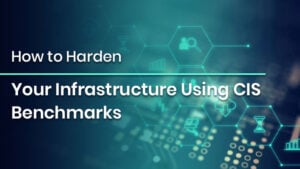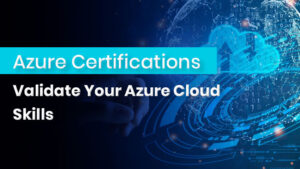
How to Harden Your Infrastructure Using CIS Benchmarks
How to Harden Your Infrastructure Using CIS Benchmarks Introduction As more organizations go faster with their digital transformation, the security and resilience of IT infrastructure
Limited-Time Offer! Get an exclusive 40% OFF on IPSpecialist Premium Monthly & Annual Plans. Use Promo Code: UPSKILLNOW at checkout.

How to Harden Your Infrastructure Using CIS Benchmarks Introduction As more organizations go faster with their digital transformation, the security and resilience of IT infrastructure

Azure Certifications – Validate Your Azure Cloud Skills Introduction Cloud computing has transformed the business landscape, providing scalability, flexibility, and affordability in a way

Top Cyber Security Trends: What Every Organization Must Know Introduction In an era marked by digital transformation, remote workforces, and rapidly evolving threat landscapes,
Table of Contents
By defining both cloud and on-premises resources in human-readable configuration files that users can reuse, version, and share, Terraform is an Infrastructure as Code tool. The infrastructure’s provisioning and lifecycle management can be done using a standardized methodology.
In addition to high-level components like DNS records and SaaS services, Terraform can handle low-level components like computation, storage, and networking resources.
However, Terraform, an Infrastructure-as-Code (IaC) solution, is one of the finest solutions for businesses to manage and expand infrastructure at scale. This article will help to analyze the basics of Terraform, along with a detailed explanation.
To learn more about Terraform, you can visit the IPSpecialist website. IPSpecialist is the best place to begin your career if you are interested in Cloud Computing, Networking, Cybersecurity, or related fields. We provide online courses, study guides, e-books, practice questions, exam-cram notes, and career guidance. Check out our Courses now!
DevOps teams generally use the IaC tool Terraform to automate various infrastructure activities.
Using Terraform, the entire infrastructure can be specified in code. Terraform enables users to construct and manage these resources in parallel across providers, regardless of whether the servers come from the same provider or another, like AWS or Azure.
Terraform uses its Application Programming Interfaces (APIs) to generate and manage resources on cloud platforms and other services.
Due to providers, Terraform can integrate with practically any platform or service with an accessible API.
The primary stages of the Terraform workflow are as follows:
Users describe resources that could span several cloud services and providers.
Based on the existing infrastructure and the setup, Terraform generates an execution plan that specifies the infrastructure it will build, update, or delete.
Terraform executes the suggested operations correctly and with consideration for any resource dependencies. For example, Terraform will recreate the VPC before scaling the virtual machines if user modifies the characteristics of a VPC and alter the number of virtual machines in that VPC.
In this section, we will discuss 5 interesting things about terraform:
The use of modules greatly enhances the ability to reuse components and deploy them into various settings, but as with any organized syntax, careful consideration must be given to the composition of the solution.
A single directory holding a manifest file corresponding to a particular collection of resources needs to be handled in how a Terraform project is typically organized by default.
Predictability is the most crucial feature of a terraform toolchain: a user must know the outcomes before using a specific operation on the environment. This is encouraged by Terraform’s default operating mode. Without making any modifications, the tool provides a human-readable plan when user runs it.
When processing a series of manifest file declarations, Terraform creates a JSON representation of the environment the user want.
Running the tool against the manifests should at any given time result in no difference in the generated state file and no intention to change resources because both the manifest files and the resulting state are persistent between runs of the tool.
Terraform is a fantastic tool for the job if a company decides it wants to be in both AWS and GCP at the same time.
On the other hand, the vast array of additional services and solutions can enable almost full end-to-end automation of the infrastructure.
HashiCorp, a San Francisco-based business industry leader in infrastructure automation for multi-cloud systems, developed the OpenSource Infrastructure as Code (IaC) tool called Terraform.
Below are several of the major key benefits of using an IaC solution like Terraform:
IaC accelerates the delivery and management lifecycles by getting rid of manual processes.
The risk of mistakes or deviations is reduced while establishing the infrastructure with IaC. The code standardizes the configuration, enabling applications to operate faultlessly without needing ongoing administrative control.
User may recover from calamities more quickly with IaC because manually rebuilt infrastructure must be manually constructed. But with IaC, user can typically execute the same scripts again to provide the same software.
IaC uses automation to eliminate numerous security vulnerabilities brought on by human error.
By establishing on-demand development and deployment environments, user may cut costs. Furthermore, user can assess these settings before making system adjustments.
Full deployment may take just a few minutes with Terraform. For example, user can simultaneously standardize the supply of several Alibaba Cloud services.
It is possible to perform migrations and brand-new installations rapidly and effectively.
Maintaining, coordinating, and deploying multi-cloud setups for DevOps teams can be extremely difficult. Terraform infrastructure-as-code can make coordinating between various service providers and technologies, such as AWS and Azure Virtual Networks, much simpler and quicker. Since it is platform-neutral, Terraform can be used with virtually any cloud or data service provider.
Businesses and developers can profit greatly from Terraform in numerous ways. It can aid in achieving the agility required to pave a successful path by automating infrastructure orchestration across various cloud platforms. All major cloud providers are completely connected with Terraform, which is offered in both an open source and an enterprise edition.
© 2025 All rights reserved | Privacy Policy | Terms and Conditions | Sitemap | Cookie Policy




